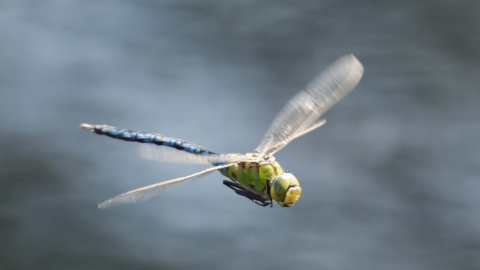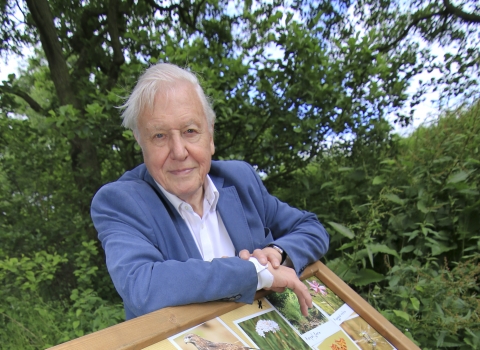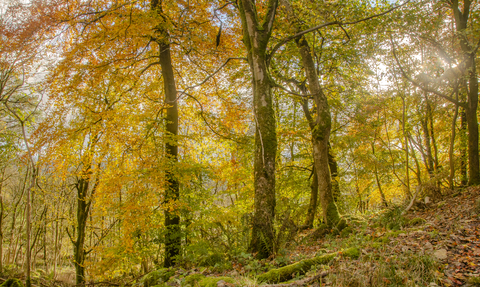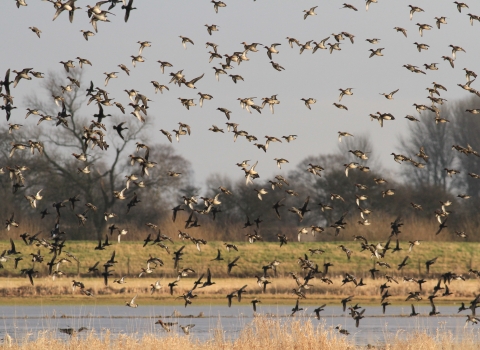

©Ross Hoddinott/2020VISION

Kestrel - (c) Paul Malton
Askham Bog Nature Reserve
It occupies the site of an ancient lake, left behind by a retreating glacier 15,000 years ago - the low hill to the south of the Bog, along which the A64 road runs, is the terminal moraine from that glacier.
Location
Know before you go
Dogs
Please keep all dogs to the boardwalk only.
When to visit
Opening times
Open at all timesBest time to visit
June to SeptemberAbout the reserve
A "cathedral of nature conservation." That's what the great Sir David Attenborough called Askham Bog when he visited in 2016. He was right, of course - the cologically important reserve on the edge of York is a wild paradise for visitors of all ages. Yorkshire Wildlife Trust was originally set up to receive the gift of Askham Bog in 1946 and care for it in perpetuity.
Contact us
Environmental designation
About
Askham Bog holds a special place in the history of nature conservation in Yorkshire: the very beginnings of Yorkshire Wildlife Trust.
Life on the bog edge
Despite being enclosed by a railway and busy roads, Askham Bog is a remarkably peaceful place. The bog edges, kept alkaline by water draining from the moraine, have the greatest diversity of plants and insects, including several very rare sedges, as well as beautiful fenland flowers such as meadow-rue, bog myrtle and meadow thistle. Some of the grand olf royal ferms are huge and possibly the oldest living things in York.
The site is home to rare
water beetles, and over 800 species of moths have been recorded here including dentated pug, whose nearest location is in East Anglia. In summer, you’ll see dragonflies zipping past, including the spectacular emperor.
Roving birds, bounding deer and hopping froglets
Along with common woodland species, including nuthatch, treecreeper, jay and great spotted woodpecker, you can find marsh and willow tit, and there are often buzzard, red kite, kestrel and sparrowhawk overhead. Spring and summer welcome several species of warbler, particularly around the pond. In winter, roving flocks of siskin, lesser redpoll and goldfinch feed on birch and alder, and you might flush a skulking woodcock from the undergrowth.
Roe deer are often seen, with a flash of their white bottoms as they bound away. Look for frogs and
newts in the ponds and ditches, especially when tiny froglets are hopping around in spring.
Seasonal highlights
- Spring: Invertebrates - Brimstone butterfly; Large red damselfly; Broad-bodied chaser; Amphibians - Common frog Birds - Willow tit; Buzzard
- Summer: Plants - Marsh orchid; Marsh thistle; Water violet; Invertebrates - Migrant hawker; Birds - Spotted flycatcher; Hobby; Sedge warbler
- Autumn: Plants - Royal fern; Gingerbread sedge; Guelder rose; Invertebrates- Common darter; Alder beetle; Birds - Redwing; Jay
- Winter: Plants - Bog myrtle; Woodcock; Birds - Lesser redpoll, Siskin; Mammals - Roe deer
History
Askham Bog was purchased in 1946 by the famous sweet manufacturers Francis Terry and Arnold Rowntree and the Yorkshire Naturalists' (now Wildlife) Trust was formed to receive it as a gift. The site has been managed ever since to restore it to the haven for wildlife it once was.
Dating back to Roman times Askham Bog was used by local communities as a source of peat for fuel, resulting in a mosaic of habitats and a legacy of ditches, probably originally used for peat extraction.
Directions
Public transport
Buses stop adjacent to the nature reserve on the A64 and in the nearby village of Copmanthorpe. A cycle track links to both York and Tadcaster.
By car
Approaching York on the eastbound A64 take the A1036 turn off and then turn sharp left in the car park just after the first set of traffic lights.
Planned maintenance
We're restoring the pond at Askham Bog for the first time in 23 years!
Whilst we wouldn't normally do such extreme works, a lack of previous maintenance across so many years has meant the pond is no longer a good habitat - and whilst it might seem like there is plenty of water at the Bog, there's actually very little.
By restoring the pond, we will be restoring the biggest and main open water environment within Askham Bog - perfect for great-crested newts, water voles, dragonflies and much more.
The work is now complete and we hope wildlife and people alike will enjoy the newly restored pond.

(c) Tom Marshall
Sir David Attenborough at Askham Bog
“It’s remarkable that such a rich site should be so close to the city. A miraculous survival! We’re lucky enough to have inherited it from past centuries, and it surely should be protected. It’s a great treasure.”
Accessibility
Walking around Askham
There is a 750m circuit on a boardwalk around the central part of Askham Bog, with a short there-and-back to the pond, suitable for most wheelchairs and pushchairs. There are passing places and benches situated along the walk. There is an accessible gate from the car park - a path runs to the start of the boardwalk which is slightly downhill.
Outside of the boardwalk the ground is soft, boggy and uneven.
The boardwalk has a chicken wire anti-slip netting, but it can still be slippery in wet weather. There may be leaves, twigs or other debris on the boardwalk after wet or windy weather. Due to the soft, boggy ground underneath, the boardwalk has a slight camber in places and may be uneven.
Transport
There is a car park at the entrance to the reserve. There are no designated disabled parking spaces, but the car park is spacious. The surface of the car park is compacted gravel and can be uneven in places.
Buses run from the city centre to Askham Bar Park and Ride which is a 15 minute walk away, on a designated pedestrian/cycle track.
There are cycle racks available in the car park.
Facilities
There are no facilities at the reserve. However, there are accessible toilets at Askham Bar Park and Ride, a five minute drive or 15 minute walk on a designated pedestrian/cycle track.
There is good phone coverage on the site.
The What3Words code for the car park is Short grabs rally.

The autumn colours were even more beautiful when the sun came out
Photo Credit - Telling our Story Volunteer, Sara









